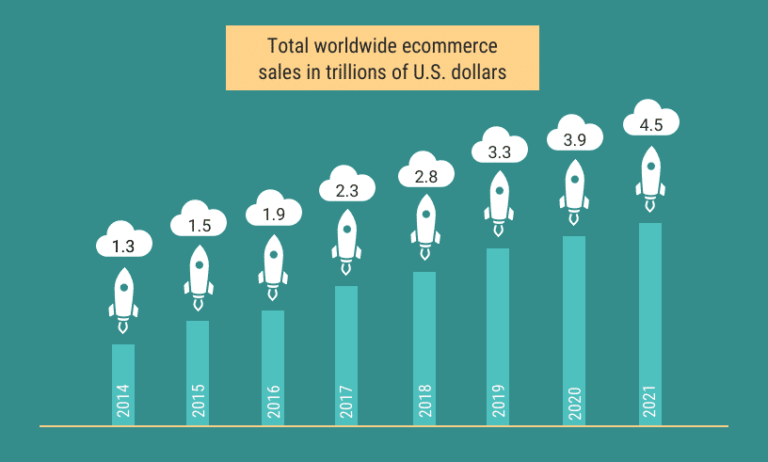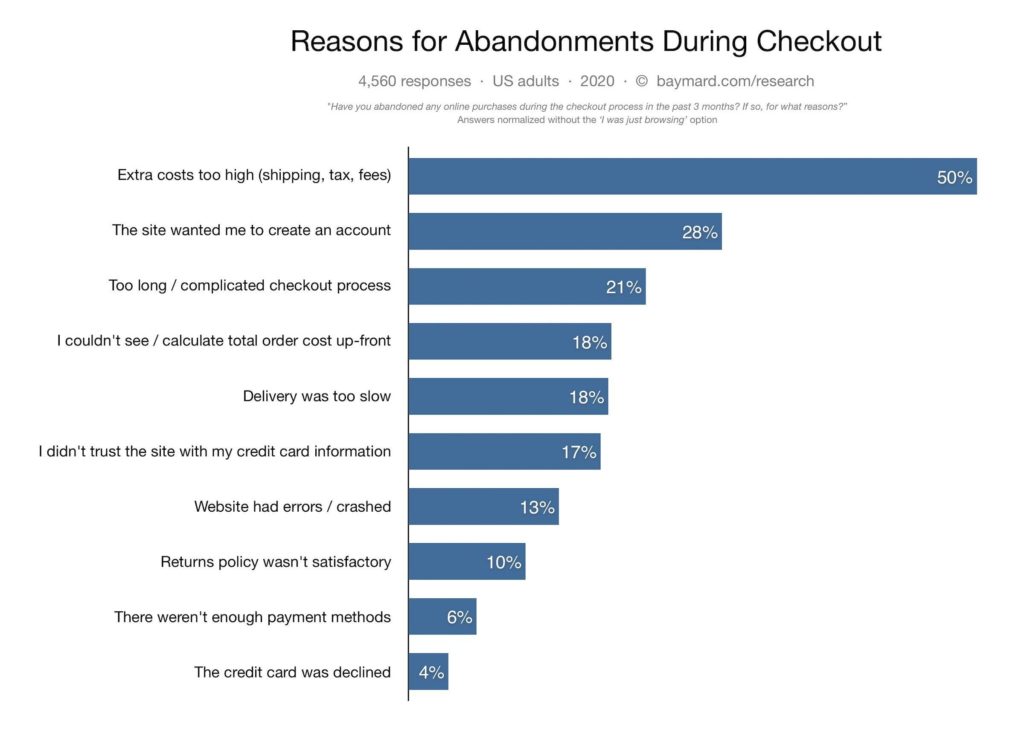E-commerce is growing, and, according to Statista, by the end of 2021, global e-commerce sales should reach $4.5 trillion (roughly 16% of total retail sales). Of course, the numbers could be higher since no one predicted a global pandemic that will drive more people into online stores.

Source: ShopifyStill, this doesn’t mean the customers are up for grabs if you have an online store!As more people turn to online shopping, the competition gets steeper, and advertising rates get higher. This means more work from e-commerce retailers and better focus on what is currently happening in the market (aka, the trends).We’ll give you a few pointers on the most prominent trends that will continue to influence e-commerce in 2020. We’ll also touch on successful strategies to follow, so make sure to keep reading.
#1: The Way People Search is Changing
Search engines are the main drivers of the online world, and they are regularly updating to provide users with a better experience and more efficient results. For this, major search engines go through constant updates that end up affecting the ranking and position of websites.
To stay in the game, you have to adapt.
This means adjusting your SEO strategy and website to match the latest requests from the market.
For instance, Google is working hard to make voice search a part of its engine. According to recent statistics, it is expected that, by 2025, 75% of U.S. households will be equipped with at least one smart speaker. In addition, more people are shopping online using their voice assistants (Cortana, Siri, or Google Assistant).
As virtual assistants become smarter thanks to natural language processing training, voice search will continue to be more present in your customers’ lives. After all, it’s a lot easier to ask your phone or smart speaker to order a few groceries than to browse for products using the touchscreen!
The game is still afoot as most e-commerce stores don’t have voice search technology readily available. So, the best way to gain a competitive advantage is to adjust your site’s structure and content to fit the trend.
#2: Artificial Intelligence and Machine Learning
One of the reasons people still go to brick-and-mortar stores is the experience. They like asking for recommendations or receiving helpful tips about their purchases from in-store associates.
However, the tables started to turn the moment Artificial Intelligence, and Machine Learning algorithms entered the arena. Websites like Amazon or eBay use AI and ML to provide users with personalized recommendations based on their purchases. Also, these algorithms adapt the content a user sees based on their purchase history and behavior.
In short, smart algorithms learn and adapt to a user’s behavior and preferences. As a result, each individual has a unique experience tailored to their needs.
The solution is obvious – AI & ML implementation in each e-commerce platform.
It may be a bit more complicated, but the investment is worth the effort. Your business can also use these algorithms to:
- Get a better understanding of the audience and improve customer service via a personalized experience.
- Provide real-time insight into marketing campaigns.
- Task automation via intelligent chatbots that can provide 24/7 customer support
- Personalized newsletters and offers
- Optimized discounting and pricing, tailored to each user’s needs
- Select the most efficient path in online advertising
As you can see, AI-based technology can be a powerful competitive advantage when used to its full potential.
#3: Big Data & Privacy Issues
Of course, you can’t have AI-based personalization if you don’t have access to the right kind of data.
Due to the fast development of the internet and user-generated content, we live in a time of data affluence. Still, we have to collect, store, and process this huge amount of information in a safe manner that provides easy access to accurate and relevant data.
This is where the Big Data concept comes in.
The concept and technology are not new, but it will become more mainstream with the increased popularity of AI-based technologies. However, the increased collection and use of users’ data raises a different problem regarding privacy and security aspects.
As users become more aware of what happens with the content and information they post online, data privacy is taken seriously. Furthermore, authorities worldwide are trying to create rules and regulations to protect users who don’t want to be exposed but would still want to benefit from internet use.
In this case, the solution is to use a highly-secured Big Data platform, following the current privacy laws. In addition, it helps to follow the trends and make sure your users’ wishes for a more private online space are respected.
It can be difficult to reach a balance between the two issues, especially as an e-commerce platform. Still, the right approach will allow users to feel safe on your site, and this could lead to increased loyalty and better word of mouth advertising.
#4: Payment Diversity
Crowded checkout forms that take forever to fill in (with every order) are a thing of the past.
According to a study by the Baymard Institute, the second and third reasons why people abandon shopping carts are the obligation to create an account and a complicated checkout process.

Source: baymard.com
Nowadays, customers expect to introduce their data once, click the Buy Now button, and be done with it. In addition, they want more payment options, especially for international orders.
As such, more and more e-commerce platforms implement methods of payment that don’t require a lot of data entry (such as Paypal, Apple Pay, and more). The process becomes smoother, faster, and more secure.
Wrap Up
At the end of the day, only one thing is certain – the e-commerce world is changing. Big online brands focus their efforts to improve the customer experience and they use the latest technologies for this.
Luckily, these technologies are easily accessible to everyone who want to keep up with the trends. Still, this doesn’t mean you have to blindly follow every trend and recommendation. Your attempt to adapt to the new world order will only be successful if you implement the technologies that matter for your business and your audience.

